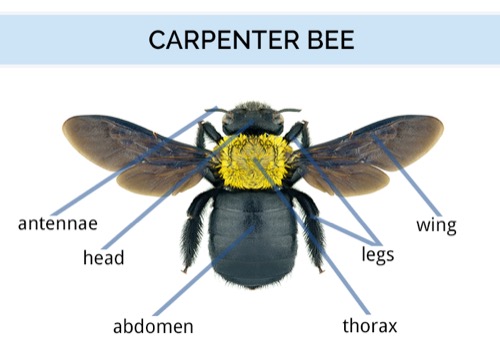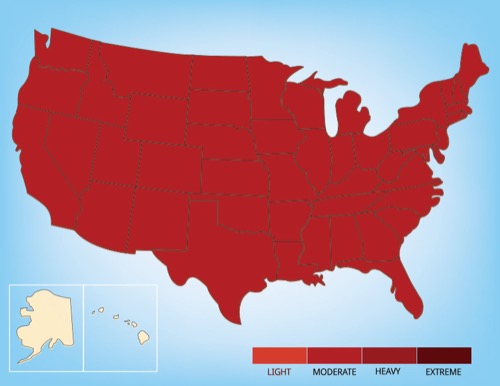- Carpenter bees have six legs
- Carpenter bees have two sets of wings
- Carpenter Bees have three body segments: head, thorax and abdomen
- Male carpenter bees do not (cannot) sting. Female carpenter bees are able to sting but must be extremely agitated before they will do so.
- Carpenter bees have a fuzzy yellow and black front end
- Carpenter bees have a dark shiny, hairless back end
- Male carpenter bees have a white or cream colored dot on the head
If you believe you have a carpenter bee nest or have seen what you believe to be a male carpenter bee or a female carpenter bee (vs bumblebee), click the right arrow below to read our Carpenter Bee Inspection Guide and learn more about where carpenter bees are found.







